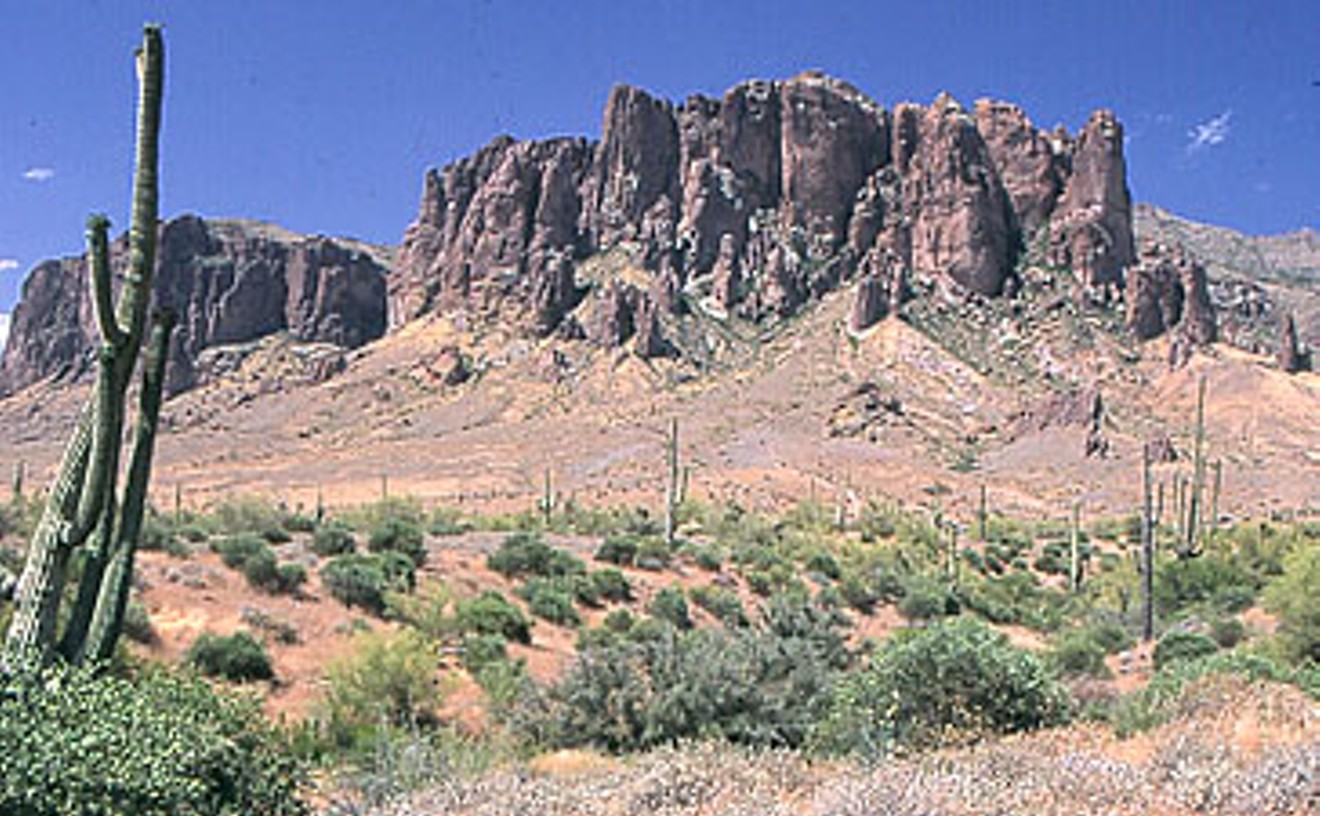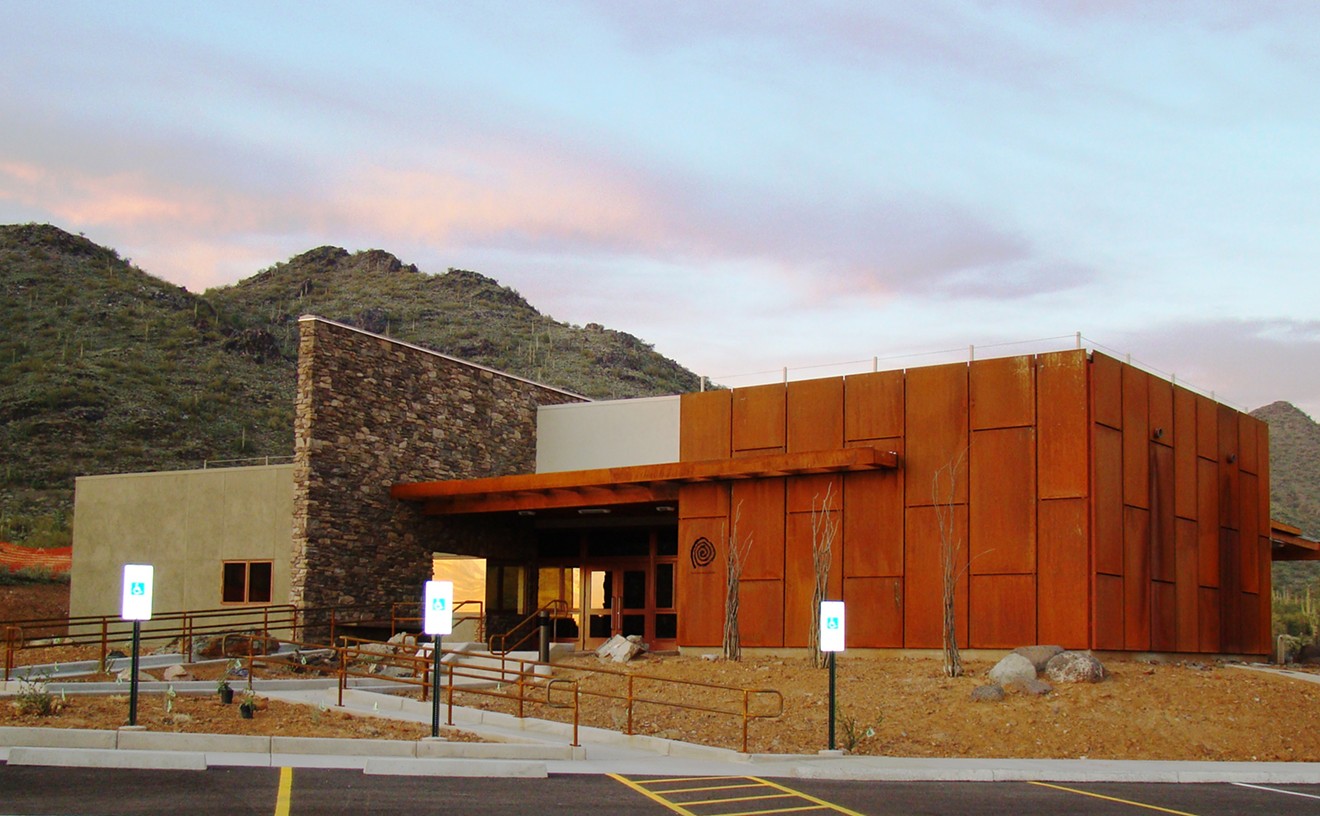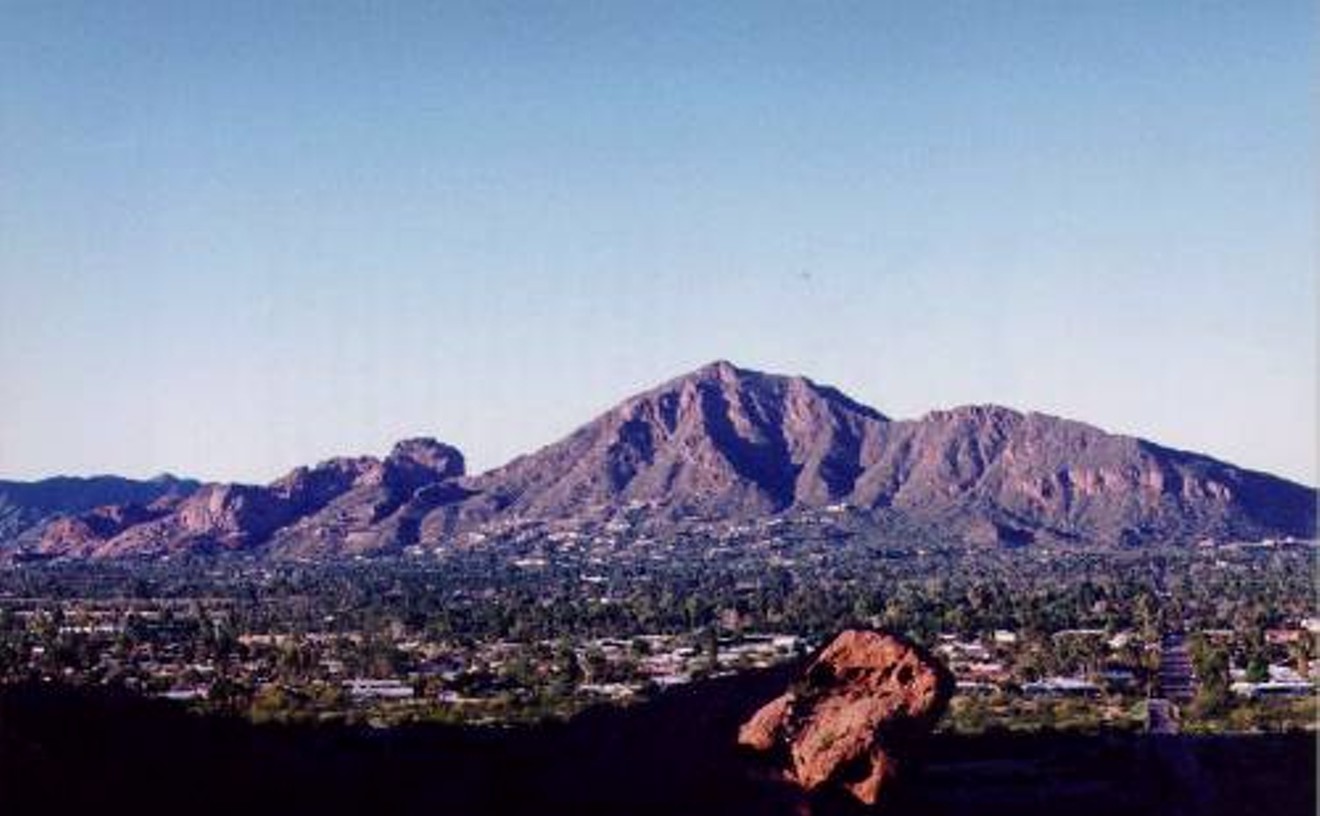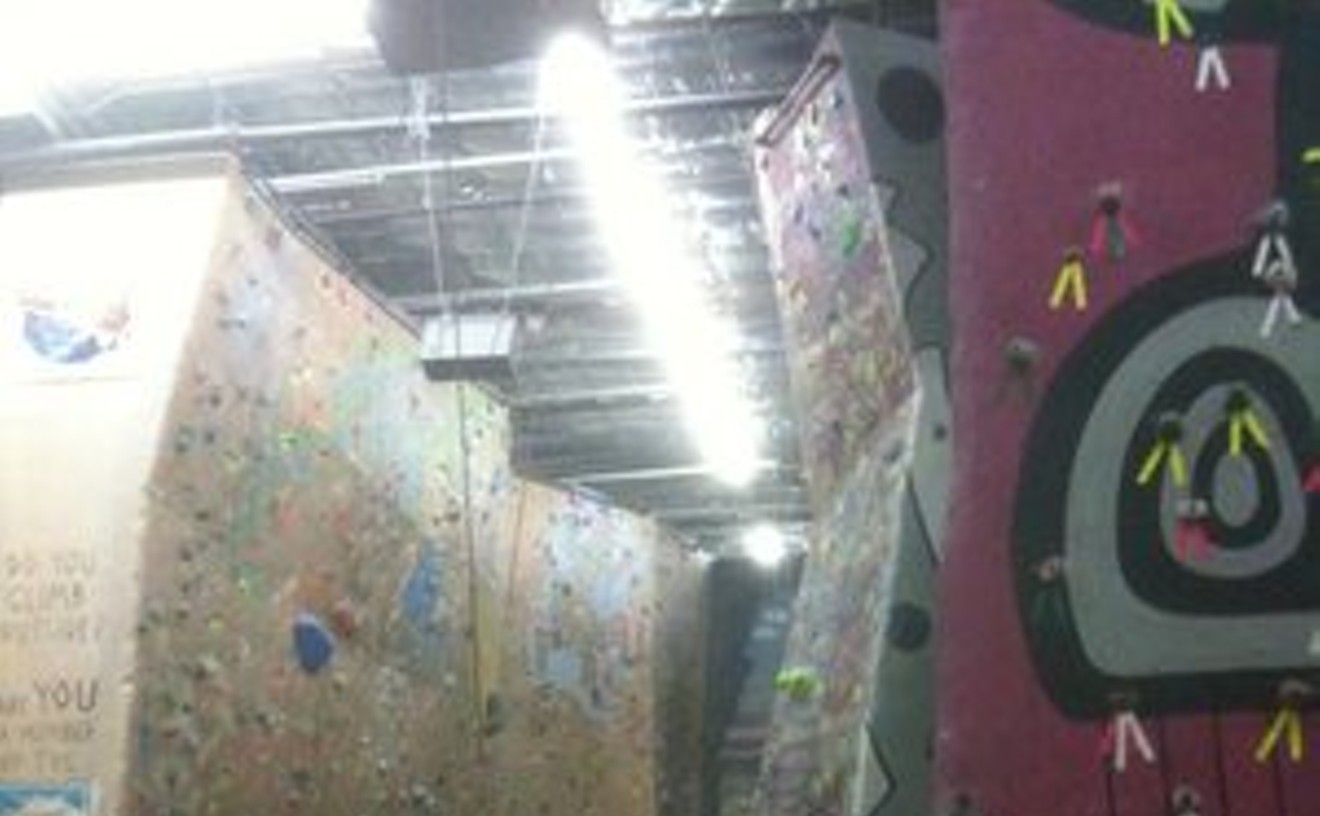For those who don't favor their pooches large — or, God forbid, don't even own a canine or two — there's not a lot worse than getting bumped off the trail on a meditative nature hike by someone struggling to maintain control of their over-excited old Lab or fearsome-looking pit bull. But we've found a spot where big dogs (on leashes, natch) rarely bother anyone but their handlers — and it's a wonderful walk, to boot. At two easy miles in length, the trails are wide and easy to traverse, so much so that park rangers encourage wheelchair-bound hikers to come on out. We were duly impressed by the Indian petroglyphs, etched into huge boulders around 1000 A.D. After a good rain, the pot at the end of the rainbow otherwise known as the Waterfall Canyon Trail is a 75-foot waterfall that seems incongruous in the Sonoran Desert.
But back to those pups. Not long ago, we saw a lone woman, who had to be pushing 80, walking slowly through the canyon on the return trip. Jogging hard the other way was a triathlete-looking fellow with his German shepherd in tow. The jogger yanked his pooch to the side of the trail, and the woman never blinked an eye, never had to wonder whether she'd be trampled. That's what we call a happy ending.










